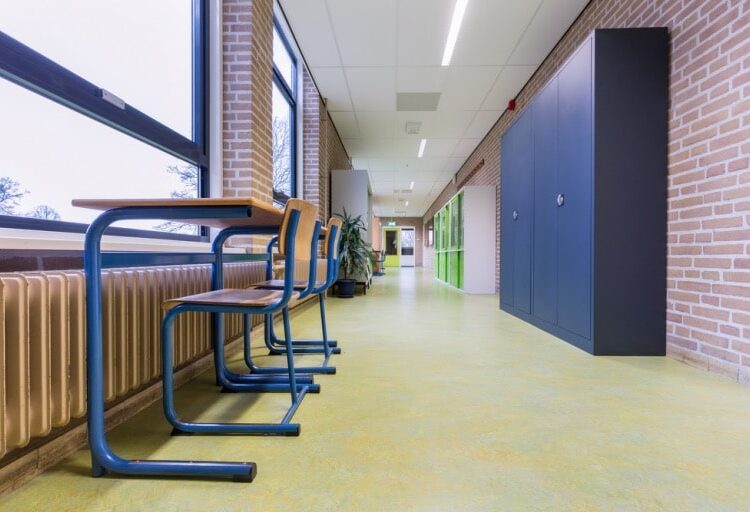Maintaining an organized environment is essential for daily school tasks. Schools gather several items that require proper storage, from classroom supplies to paperwork. This article discusses how storage cabinets can significantly improve school organization by enhancing efficiency and order.
Decluttering: How Storage Cabinets Help Organize Classrooms?
An organized and clutter-free classroom fosters better learning outcomes and creates an atmosphere for students and teachers. Mobile storage cabinets for schools allow educators to store and access teaching materials effectively.
1. Utilizing Learning Space Efficiently
In compact classroom settings, making the most of the space for teaching and learning purposes is crucial. By incorporating storage cabinets, teachers can store textbooks, notebooks, art supplies, educational games, and other resources within reach. Eliminating the need for piles of books or stacks of papers on desks utilizes the learning area efficiently.
2. Convenient Access to Materials
Placing storage cabinets in classrooms makes materials easily accessible to teachers and students. Arranging items neatly inside the cabinets enables the identification of resources during lessons or activities, thereby reducing time spent searching for items. Efficient access enhances productivity and facilitates transitions between various learning activities.
Improving Administrative Processes: Utilizing Cabinets for Office and Staff Room Organization
Efficient administrative processes are essential for a well-run institution. Introducing storage solutions like cabinets helps reduce clutter in staff rooms or office spaces, making it easier to access documents.
1. Secure Document Storage
Preserving paperwork, such as staff records, student files, financial documents, and event planning materials, is crucial for long-term safekeeping. Cabinets with locking mechanisms protect access or damage from environmental factors like moisture or pests.
2. Organized File Handling
Effective file management is vital for administrative professionals to maintain a workflow. Cabinets with labeled shelves or drawers allow administrators to store and categorize documents systematically, simplifying retrieval when needed, reducing time wastage, and promoting collaboration among colleagues during information sharing.
Promoting Cleanliness and Safety: Cabinet Use in Science Labs
Science labs house a range of chemicals, equipment, specimens, and scientific tools. Proper storage solutions improve efficiency and prioritize safety in these environments.
1. Proper Handling of Hazardous Materials
Ensuring the safety of students and staff in science labs involves separating hazardous substances from safe ones. Using storage cabinets with designated compartments for different types of chemicals helps prevent mixing, which could result in dangerous situations. Clearly labeling shelves also aids researchers or educators in locating substances needed for experiments.
2. Secure Storage of Equipment
Delicate or valuable scientific equipment, such as microscopes and glassware, requires handling and storage between lab sessions. Storage cabinets equipped with cushioned shelving or lockable compartments provide an environment to store intricate instruments without the risk of damage or theft.
Encouraging Student Independence: Utilizing Storage Cabinets in Library Settings
Libraries play a vital role in institutions by offering students various books and resources. Storage cabinets provide multiple advantages in organizing library spaces and fostering student autonomy.
1. Effective Book Organization
Educators can arrange books in storage cabinets, making it easier for students to find titles or subjects they are interested in. By categorizing books by genres, authors, or topics and labeling shelves, librarians can create a user system that empowers students to explore the collection independently.
2. Securing Valuable Assets
Libraries are known to hold unique items, such as reference materials, historical documents, and special collections. Cabinets with locking mechanisms offer an added level of safeguarding for these resources.
3. Personalized Study Areas
Integrating storage cabinets within library spaces enables the creation of tailored study zones for students. By incorporating cabinets with compartments or cubbies, students can securely store their belongings while studying in corners of the library, fostering a sense of ownership and accountability among students in upholding a personalized study environment.
In Conclusion
From classrooms to offices and labs, storage cabinets promote organization, efficiency, and safety within educational settings while enhancing teaching and learning experiences. By utilizing these versatile storage solutions, schools can bid farewell to spaces and use makeshift organizational methods.
Instead, they can adopt an approach that minimizes time wastage for educators and administrative staff, establishes learning environments for students, streamlines operations in offices/staff rooms, and improves safety protocols in laboratories – all leading to an overall enhancement of school organization.




